Huafeng Wang
North China University of Technology
MolCLIP: A Molecular-Auxiliary CLIP Framework for Identifying Drug Mechanism of Action Based on Time-Lapsed Mitochondrial Images
Jul 10, 2025Abstract:Drug Mechanism of Action (MoA) mainly investigates how drug molecules interact with cells, which is crucial for drug discovery and clinical application. Recently, deep learning models have been used to recognize MoA by relying on high-content and fluorescence images of cells exposed to various drugs. However, these methods focus on spatial characteristics while overlooking the temporal dynamics of live cells. Time-lapse imaging is more suitable for observing the cell response to drugs. Additionally, drug molecules can trigger cellular dynamic variations related to specific MoA. This indicates that the drug molecule modality may complement the image counterpart. This paper proposes MolCLIP, the first visual language model to combine microscopic cell video- and molecule-modalities. MolCLIP designs a molecule-auxiliary CLIP framework to guide video features in learning the distribution of the molecular latent space. Furthermore, we integrate a metric learning strategy with MolCLIP to optimize the aggregation of video features. Experimental results on the MitoDataset demonstrate that MolCLIP achieves improvements of 51.2% and 20.5% in mAP for drug identification and MoA recognition, respectively.
A Survey : Neural Networks for AMR-to-Text
Jun 15, 2022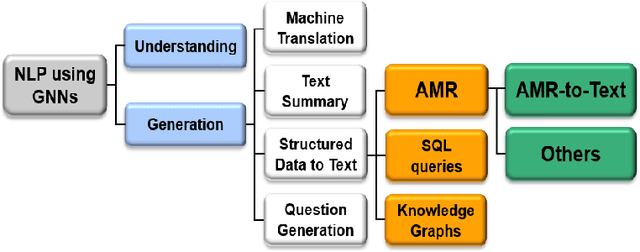
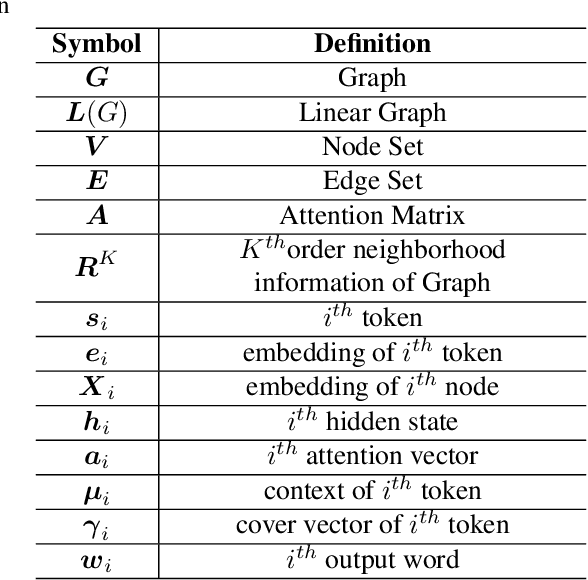
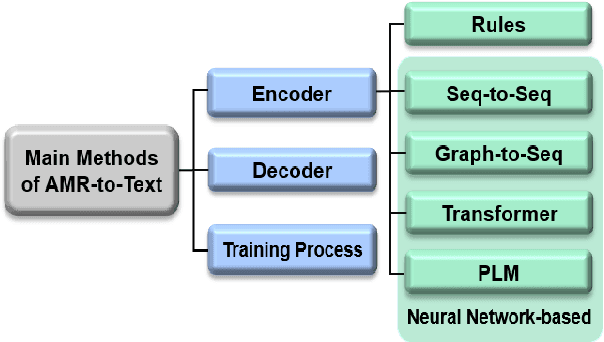
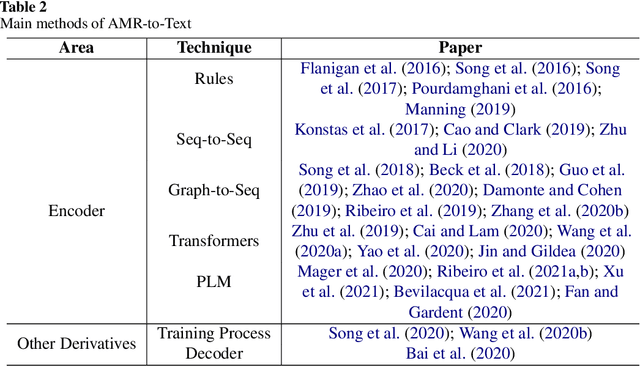
Abstract:AMR-to-text is one of the key techniques in the NLP community that aims at generating sentences from the Abstract Meaning Representation (AMR) graphs. Since AMR was proposed in 2013, the study on AMR-to-Text has become increasingly prevalent as an essential branch of structured data to text because of the unique advantages of AMR as a high-level semantic description of natural language. In this paper, we provide a brief survey of AMR-to-Text. Firstly, we introduce the current scenario of this technique and point out its difficulties. Secondly, based on the methods used in previous studies, we roughly divided them into five categories according to their respective mechanisms, i.e., Rules-based, Seq-to-Seq-based, Graph-to-Seq-based, Transformer-based, and Pre-trained Language Model (PLM)-based. In particular, we detail the neural network-based method and present the latest progress of AMR-to-Text, which refers to AMR reconstruction, Decoder optimization, etc. Furthermore, we present the benchmarks and evaluation methods of AMR-to-Text. Eventually, we provide a summary of current techniques and the outlook for future research.
Sleep Staging Based on Multi Scale Dual Attention Network
Aug 14, 2021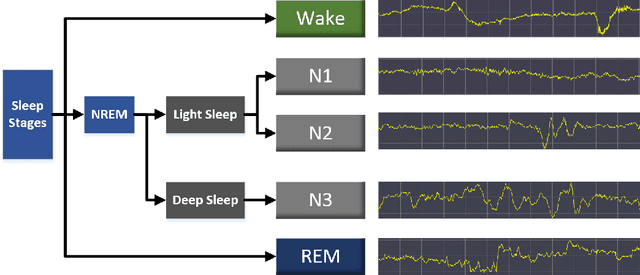



Abstract:Sleep staging plays an important role on the diagnosis of sleep disorders. In general, experts classify sleep stages manually based on polysomnography (PSG), which is quite time-consuming. Meanwhile, the acquisition process of multiple signals is much complex, which can affect the subject's sleep. Therefore, the use of single-channel electroencephalogram (EEG) for automatic sleep staging has become a popular research topic. In the literature, a large number of sleep staging methods based on single-channel EEG have been proposed with promising results and achieve the preliminary automation of sleep staging. However, the performance for most of these methods in the N1 stage do not satisfy the needs of the diagnosis. In this paper, we propose a deep learning model multi scale dual attention network(MSDAN) based on raw EEG, which utilizes multi-scale convolution to extract features in different waveforms contained in the EEG signal, connects channel attention and spatial attention mechanisms in series to filter and highlight key information, and uses soft thresholding to remove redundant information. Experiments were conducted using two datasets with 5-fold cross-validation and hold-out validation method. The final average accuracy, overall accuracy, macro F1 score and Cohen's Kappa coefficient of the model reach 96.70%, 91.74%, 0.8231 and 0.8723 on the Sleep-EDF dataset, 96.14%, 90.35%, 0.7945 and 0.8284 on the Sleep-EDFx dataset. Significantly, our model performed superiorly in the N1 stage, with F1 scores of 54.41% and 52.79% on the two datasets respectively. The results show the superiority of our network over the existing methods, reaching a new state-of-the-art. In particular, the proposed method achieves excellent results in the N1 sleep stage compared to other methods.
Image Super-Resolution Using a Wavelet-based Generative Adversarial Network
Jul 24, 2019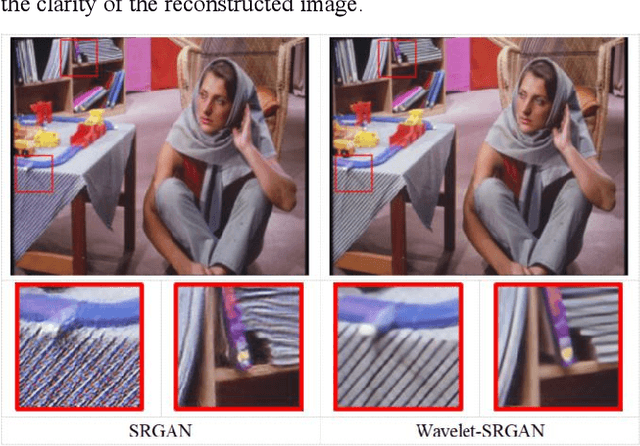



Abstract:In this paper, we consider the problem of super-resolution recons-truction. This is a hot topic because super-resolution reconstruction has a wide range of applications in the medical field, remote sensing monitoring, and criminal investigation. Compared with traditional algorithms, the current super-resolution reconstruction algorithm based on deep learning greatly improves the clarity of reconstructed pictures. Existing work like Super-Resolution Using a Generative Adversarial Network (SRGAN) can effectively restore the texture details of the image. However, experimentally verified that the texture details of the image recovered by the SRGAN are not robust. In order to get super-resolution reconstructed images with richer high-frequency details, we improve the network structure and propose a super-resolution reconstruction algorithm combining wavelet transform and Generative Adversarial Network. The proposed algorithm can efficiently reconstruct high-resolution images with rich global information and local texture details. We have trained our model by PyTorch framework and VOC2012 dataset, and tested it by Set5, Set14, BSD100 and Urban100 test datasets.
 Add to Chrome
Add to Chrome Add to Firefox
Add to Firefox Add to Edge
Add to Edge